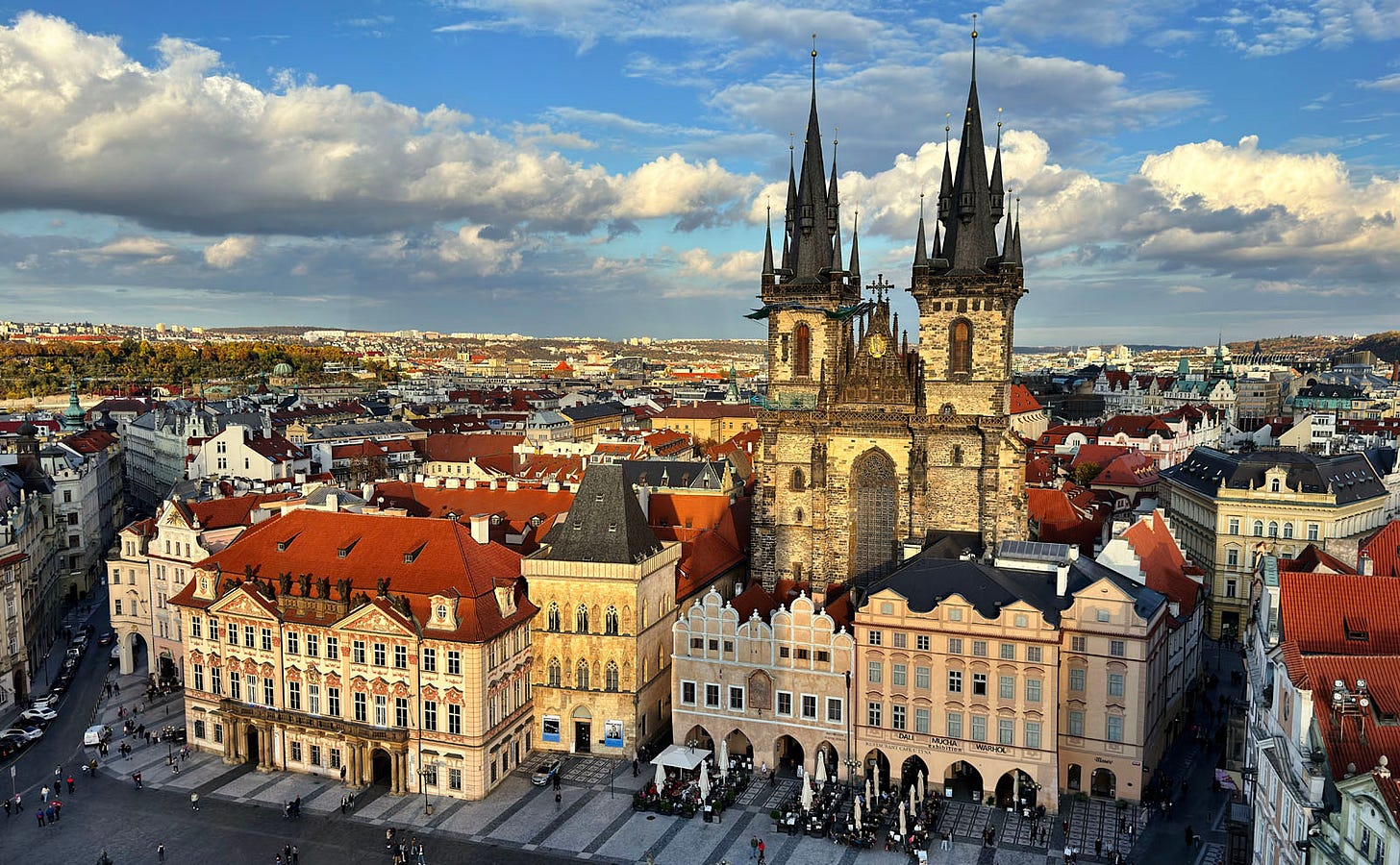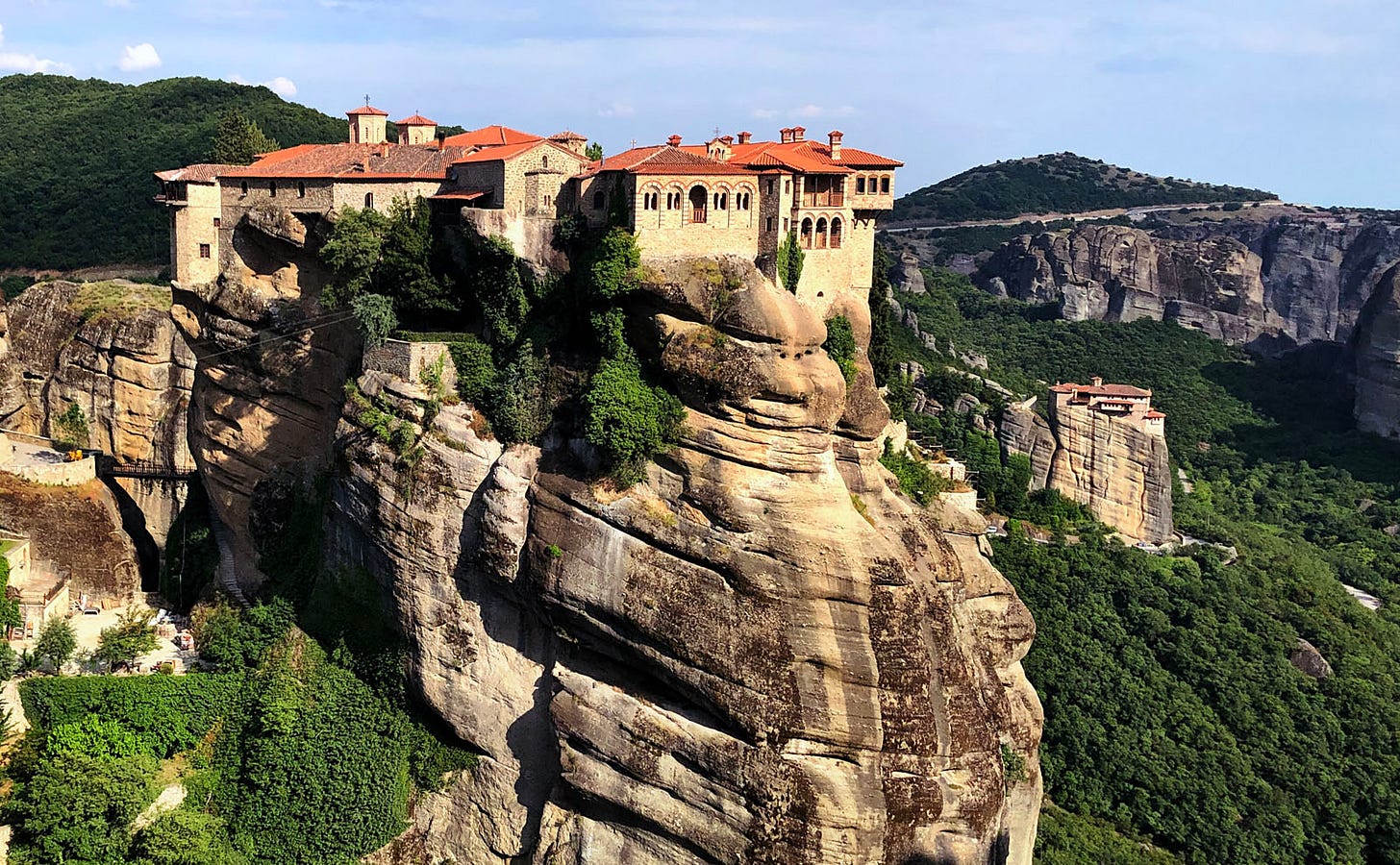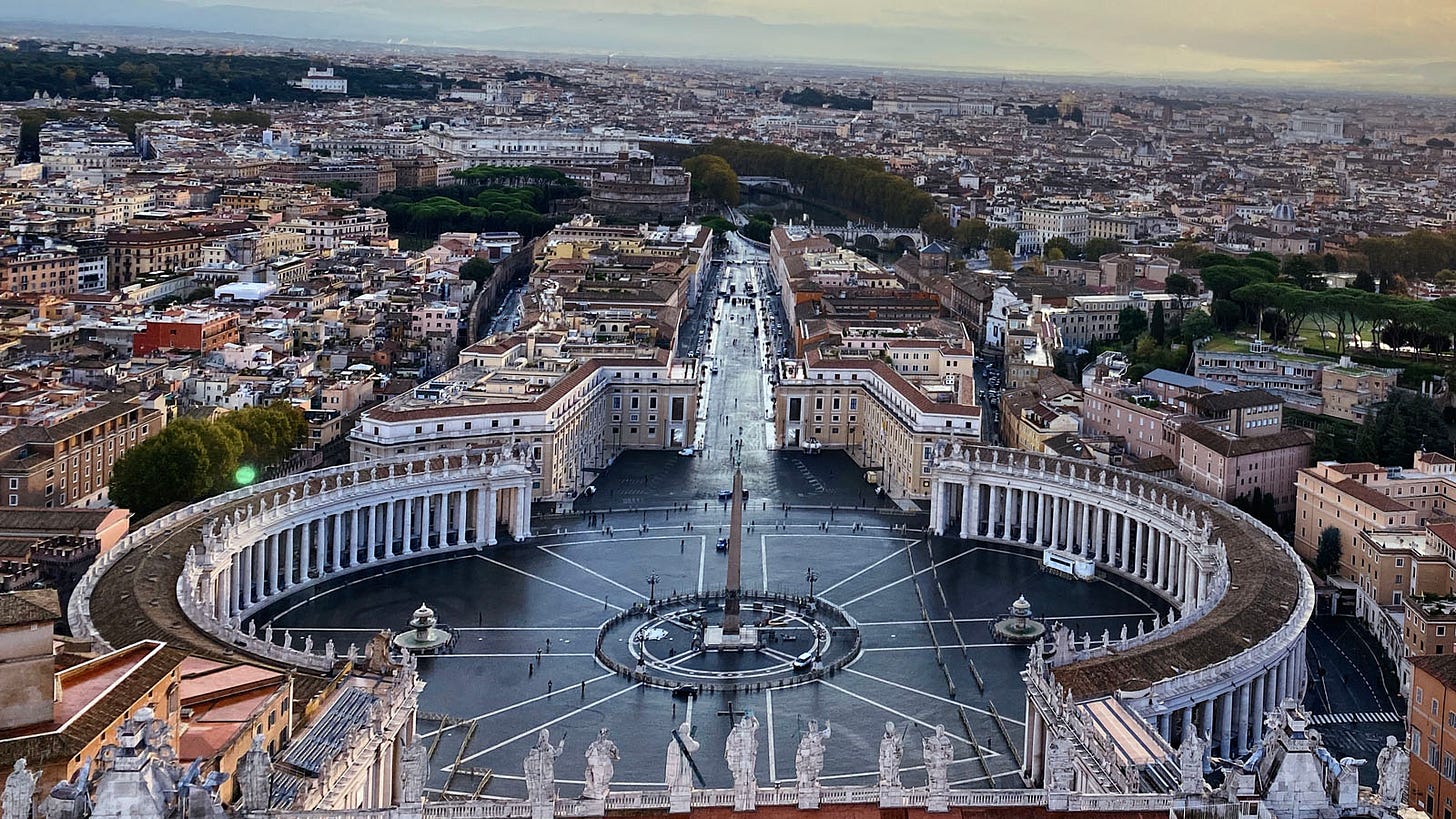(7 min read) An argument — largely for my Instagram base — about why Substack deserves my effort and your attention.
TL;DR for Instagrammers
Social media platforms like Instagram and Twitter train us into shallow thinking patterns, undermining our capacity for nuanced thought. I’m shifting my creative focus to Substack, where deeper engagement is possible. Join me — it’s better here.
Thinking Through Media
As I mentioned in passing in “The Nature of Bodies Politics & the Role of Media,” media does more than shape the way we represent our thoughts. It actually shapes the way we think, and in fact even becomes part of the overall system through which thought occurs. Thought does not simply occur inside the brain, but rather in the back-and-forth between our brains and the technology/media by which we give shape to ideas. (See Clark, Malafouris, McLuhan, Ong, and Postman in the “Suggested Reading” section at the end of this post.)
Just as writing, printing, mass media, and the internet shaped social orders and bodies politic, they also shaped individual minds — and they still shape them. Writing reshaped human consciousness (Ong), television transformed public discourse (Postman), and today our daily interactions with media platforms like Instagram, Twitter, and Substack are quietly molding our habits of thought, attention spans, and even our capacity for nuance.
Is it pure coincidence that the rise in (often self-diagnosed) ADHD parallels the rise of short-form social media apps? I think not. The media environments we immerse ourselves in are training our minds to process information in particular ways, rewiring neural pathways with every scroll, every tap, every notification.
Depth in Media
There are many metrics by which we can compare different forms of media, but here I want to focus on depth.
Some forms of media are deeper than others, allowing for — or possibly even forcing upon us — a more sustained, careful, and/or probing form of interaction. Other forms of media actively make sustained attention, careful thought, and probing analysis difficult — these are shallow.
Even broad media categories such as “writing” can be broken down into more specific forms with more or less depth. Reading is often considered a “deeper” form of media than television, for example. But reading isn’t inherently deep.
Compare reading 1,000 tweets to reading a 200-page book. Even if both contain the same word count, they create fundamentally different cognitive experiences. The book offers a sustained narrative or argument that builds upon itself, creating a coherent whole. Tweets, even if all by the same author, exist as disconnected fragments in an endless stream. One develops your ability to think through complex ideas with nuance, the other trains you to think in short, unsophisticated bursts.
Likewise, the experience of walking through an uncrowded art museum and looking at paintings is inherently different from scrolling through an art account on Instagram (like my thousands_of_museums). Not only is the art in the museum full-size and three-dimensional — even a painting has some depth and texture than cannot be captured in photography — but museum spaces, gallery designs, and policies about behavior all work to create a more meditative experience than is remotely possible in the endless scrolling feed offered up by your phone.
This isn’t to say deeper is always “better.” We all need to relax sometimes, and I love cat videos too. Even more positively, platforms like Google Arts & Culture and Instagram offer the opportunity to “graze” and sometimes create strange juxtapositions that you couldn’t get with a museum or book.
But when shallow media consumption becomes our primary mode of engagement with the world, our capacity for sophisticated, nuanced thought begins to atrophy.
Ad-supported social media platforms purposefully push us toward ever more fragmented consumption patterns because fragmentation maximizes engagement and, by extension, ad revenue. But even worse, engagement can be further increased by algorithms that prioritize the most provocative content they can find.
Algorithmic Gatekeeping
Instagram and Twitter (and their various rivals) are inherently shallow just because they are short form. It’s impossible to express a nuanced opinion in 280 characters, and while stringing together ten tweets expands things a bit, it still can’t compare to a book. The fragmentary, fleeting nature of their feeds exacerbates this: nothing lasts, it’s just one ephemeral out of context moment after another.
But what turns these platforms from simply shallow media into corrosive ones is the algorithmic curation of their feeds, aimed at maximizing ad revenue by maximizing engagement. And the easiest way to engagement is through titillation, shock, and outrage.
Algorithmic feeds shape not just what we see but how we think. When 5,000 tweets are no longer arranged chronologically but by an algorithm designed to maximize “engagement” (which typically means emotional reactions), we’re not just consuming content – we’re being conditioned. These systems are engineered to trigger dopamine through novelty, outrage, and confirmation bias, targeting the worst aspects of ourselves.
The consequences extend beyond individual psychology. When enough people spend enough time in these algorithmically curated outrage machines, social cohesion begins to fray. Shared reality dissolves into filter bubbles. Nuance becomes a casualty of binary thinking. Soon enough, we find ourselves unable to engage in the kind of sustained, good-faith discourse that democracies require to function.
Beyond the Metrics
I’m not writing this to discuss the fracturing of democratic discourse (see this post for that discussion), however. I am writing to explain why I am shifting my focus from Instagram to here.
I began working on a book about Gothic architecture in January last year. A few weeks into it, I decided it would be a good idea if I had an audience to tell about it when the time came. So I started an instagram account. To my surprise, it grew quite quickly: after just 15 months, I have over 16,000 followers — that’s no mean feat.
But this audience, it turns out, is not very valuable.
For one thing, most of them have a very shallow interest in Gothic and just like dramatic photos: show a kaleidoscopic rose window or a soaring, light filled nave and you can get tons of likes. There’s nothing wrong with having a passing interest — but if my goal is to find people interested in a book on the subject, then at least 90% of my Instagram followers aren’t my target.
What’s more, I cannot show my posts directly to my audience: even my best-performing posts are only shown to about 1/3 of my followers, and the average post reaches less than 1/6 of them. To reach my audience, I first have to convince Instagram’s algorithm that my “content” is “engaging” enough. I know how to do that—the aforementioned rose windows and dramatic symmetrical shots work fine. But if I want to show or discuss something less obviously stunning visually, the algorithm decides it’s not worth putting in most people’s feeds.
With Substack on the other hand, I have an audience that (a) actually cares about deep studies of Gothic architecture, and whom (b) I know will receive my posts. I may only have 220 subscribers (for now; please like and share this post, lol!), but I am fairly convinced that they/you are more valuable than my 16K Instagram followers. The quality of engagement, the depth of response, and the satisfaction I get creating content for Substack versus Instagram simply can’t be compared.
And many of you have interests that are wider than Gothic architecture, too, which is another bonus. You’re here for thoughtful discussions about history, philosophy, and art — not just for pretty pictures.
Choosing Depth Over Breadth
The ultimate point of this post is simply to say that I will stop posting detailed slideshows with captions on Instagram (unless I intend to cross-post them to Substack Notes for embedding). I will instead focus my efforts here, in longer-form photo essays that I know will be seen and appreciated.
I’ll still post to Instagram, but only in order to use that shallow, yet broader-based, platform as a funnel to bring people here.
In making this shift, I’m choosing depth over breadth, meaningful engagement over algorithmic approval, and thoughtful discourse over dopamine hits. I’m also choosing to respect your attention and intelligence rather than treating you as a metric to be optimized.
By moving away from a platform that fragments our attention to one that encourages sustained engagement, I hope to contribute in some small way to a healthier media ecosystem — one that nurtures our capacity for nuanced thought rather than eroding it.
This is not just about where I post my Gothic architecture photos. It’s about resisting the pull toward shallowness that pervades our digital lives, choosing instead to cultivate spaces where depth can flourish. I hope you’ll stick with me on this journey, whether you’re here for the Gothic architecture, the museum showcases, or the philosophical and historical musings.
~
Suggested Reading
Clark, Andy. Supersizing the Mind. 2011.
Malafouris, Lambros. How Things Shape the Mind. 2013.
McLuhan, Marshall. Understanding Media. 1964.
Ong, Walter. Orality and Literacy. 1982.
Postman, Neil. Amusing Ourselves to Death. 1985.











💯 agree with and support your transition to focus your posting energy and effort here to Substack. To that end, you’re inspiring me to start up a Substack to record my thoughts, accumulated learnings, and miscellaneous ramblings about my “all things Roman” obsession. The small amount of posting I’ve done in Insta has always been more about sharing my fascinations of the moment rather than building up a following. For one thing, my fascinations are too broad, and the thread tying them together is mostly limited to the random paths my brain.
I’m grateful for these kinds of posts, and I hope more people recognize the value of it as well.
I am enjoying and learning so much from your Substack writing. Yes, the Gothic cathedrals and museums are breathtaking. You take great pictures. But even more impactful to this agnostic is seeing all that FAITH put on display. The masons and glassmakers were not just putting up a building; they were worshiping their God in the way they knew best. It is inspiring.
Recently I have been attracted to histories about the monks and scribes who worked in awful circumstances to create the marvelous illuminated manuscripts that have survived over the centuries. Their faith was just as strong as the cathedral builders and their efforts were contemporaneous.
I appreciate how these threads intertwine.